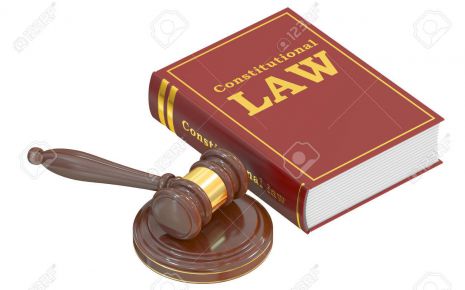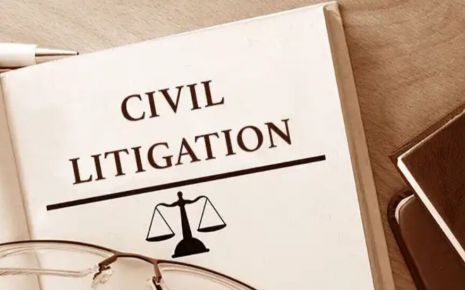Patent Licensing Agreements And The Clauses Covered Under It
Before knowing about what patent licensing agreement is, the first thing comes
is what exactly is the meaning of patent? The term patent is defined under
Section 2(n) of the Indian Patent Act 1970 which states that a patent means
patent for any type of invention granted under this Act.[1] A patent is
basically a right granted to a person for the invention of a product or a
process through which a new method of commencing a particular thing is evolved.
A patent provides protection of a invented product/process for a term period of 20 years, after expiry of which the patented product/process will be opened for commercial purpose and the inventor has to disclose all the information relating to its inventing process so that it is easy for others to use and which will also lead to further enhancement in the technology of the product/process. In this way, patenting a product not only provides for its protection of the right of the inventor but also motivates other inventors for future enhancement of the same invention.
In the case of Midas Hygiene Industries (P) Ltd vs. Sudhir Bhatia, the court held that in case of infringement of a patent right, normally an injunction must follow. Also the grant of an injunction becomes necessary if it appears that the adoption of a patent right was dishonest.[2]
When a patent is being granted regarding a particular product/process, then that particular product/process cannot be utilized for commercial purpose, made or sold without the permission of the person who has invented that particular product/ process. Only the owner of a patented product/process has the right to decide who will use his product and who cannot. Also when the inventor grants permission to another person for using his patented product/process, in return the inventor receives royalty fees.
The inventor can also sell his right of invention to another person with which the right of ownership will also be transferred to that particular person and he will then become the owner of that patented product/process. When the inventor of the product/process gives the right of the product/process to another person/third party for the purpose of using that particular product/process, the concept of patent licensing comes into effect.
When the inventor accepts the offer for selling his invention to another person, an agreement is made between both the parties i.e. the licensor (inventor of the product/process) and the licensee (person who will enjoy the benefits after the right of ownership is transferred to him). The licensor will be getting a royalty fees in return of him giving consent to the other party to use, sell or extract benefits from his patent product/process.
In patent licensing, the licensor does not permanently transfer the right of ownership to the licensee rather it is for a specified amount of time which is mentioned in the agreement. The terms and conditions of the agreement are mutually decided by both the parties to the agreement i.e. the licensor and the licensee.
The licensee can extract the benefits from the patented product only for the time period mentioned in the agreement. After the expiry of the specified time period, the right of ownership return back to the inventor (licensor) and the licensee can no longer extract the benefits out of the patented product/process.
End-Notes:
Award Winning Article Is Written By: Mr.Kush Bisht
A patent provides protection of a invented product/process for a term period of 20 years, after expiry of which the patented product/process will be opened for commercial purpose and the inventor has to disclose all the information relating to its inventing process so that it is easy for others to use and which will also lead to further enhancement in the technology of the product/process. In this way, patenting a product not only provides for its protection of the right of the inventor but also motivates other inventors for future enhancement of the same invention.
In the case of Midas Hygiene Industries (P) Ltd vs. Sudhir Bhatia, the court held that in case of infringement of a patent right, normally an injunction must follow. Also the grant of an injunction becomes necessary if it appears that the adoption of a patent right was dishonest.[2]
When a patent is being granted regarding a particular product/process, then that particular product/process cannot be utilized for commercial purpose, made or sold without the permission of the person who has invented that particular product/ process. Only the owner of a patented product/process has the right to decide who will use his product and who cannot. Also when the inventor grants permission to another person for using his patented product/process, in return the inventor receives royalty fees.
The inventor can also sell his right of invention to another person with which the right of ownership will also be transferred to that particular person and he will then become the owner of that patented product/process. When the inventor of the product/process gives the right of the product/process to another person/third party for the purpose of using that particular product/process, the concept of patent licensing comes into effect.
Patent Licensing
Patent licensing means transferring the right of ownership for a specified period of time from the inventor to a third party who will then enjoy the benefits from that invented product/process. The owner of the patented product/process gives his consent to a third party to enjoy the benefits arising out of the product/process and also to sell or use it.When the inventor accepts the offer for selling his invention to another person, an agreement is made between both the parties i.e. the licensor (inventor of the product/process) and the licensee (person who will enjoy the benefits after the right of ownership is transferred to him). The licensor will be getting a royalty fees in return of him giving consent to the other party to use, sell or extract benefits from his patent product/process.
In patent licensing, the licensor does not permanently transfer the right of ownership to the licensee rather it is for a specified amount of time which is mentioned in the agreement. The terms and conditions of the agreement are mutually decided by both the parties to the agreement i.e. the licensor and the licensee.
The licensee can extract the benefits from the patented product only for the time period mentioned in the agreement. After the expiry of the specified time period, the right of ownership return back to the inventor (licensor) and the licensee can no longer extract the benefits out of the patented product/process.
Advantages Of Patent Licensing
Limited Period:
The main advantage of patent licensing is that the transfer of right to extract benefits out of the patented product/process by the licensee can only be for a specified period of time that is mentioned in the agreement
Transfer of Risk:
The production and manufacturing of a product/design/process requires a lot of risk. Therefore with the help of patent licensing the inventor can transfer suck risks involved in production of the patent product/design/process to the licensee.
Competitive Advantage:
If a patented product/process is already licensed to a well established company or organization which is having a large amount of customer base then the patented product/process will have a larger market share to capture in comparison to the patents that are not having a large customer base.
Global Market:
Patent licensing helps companies to overcome the difficulty of having mass production of a product individually as it permits other companies to also produce the same product which results in mass production of the said product.
Disadvantages Of Patent Licensing
Loss of Control:
The main disadvantage of patent licensing is that it leads to loss of control over the patented product/process/design as the licensor transfers the right to extract benefits out of the product to the licensee.
Difficulty to determine licensee:
Another disadvantage of patent licensing is that it requires a lot of research and efforts to find out the right licensee for the invented product/process. It is necessary for an inventor to find the appropriate licensee in order to get maximum benefits out of the agreement.
Risk of Patent Reputation getting damaged:
When the licensor transfers the right to extract benefits out of the patented product/process, he solely relies on the ability of the licensee as how effectively he will commercialize the patented product. If the licensee does not perform well in commercializing the patented product, it will ultimately lead to affect the reputation of the patent and its future success.
Approaches To Patent Licensing
Carrot Approach:
In this approach, the inventor (licensor) of the product must approach the potential licensee and persuade him to license the said product. The potential licensee can choose whether to license the patented product or not. Therefore, the licensor must convince the potential licensee to license the patented product if he wants to generate more income/benefits from the invented product.
Stick Approach:
In this approach, it has already been determined that the potential licensee is somehow using the patented product without the consent of the licensor and thus, has infringed the right of the licensor. Therefore, the licensor approaches for the method of litigation in order to stop the potential licensee to further infringe the right of the licensor.
Types Of Patent License
Exclusive License:
In this type of license, all the rights of a patent owner (licensor) are transferred to the licensee except the title of the patent, which means that the licensee shall enjoy all the benefits arising out of the patented product but shall not be in a position to sell the patented product or further transfer it to another person
Non-Exclusive License:
In this type of the license, all the rights of a patent owner are transferred to the licensee, including the title, which means that the licensee shall have the power to sell the patented product to another person also. Also the licensor have the power to transfer such right to another licensee also, thereby making various licensees to enjoy benefits arising out of the patented product.
Sub License:
In this, the licensor grants a certain licensed right of the patented product to various organizations in order to make the products.
Cross License:
In this, there exists an exchange of license between various organizations for making the product. Cross license is preferred in those cases where the product involves the support of other products in order to make its place in the market for better utilization.
Compulsory License:
in this, the government grants permission (irrespective of the will of the licensor) to utilize the patented product, sell or make a patented design, for public benefit. It is generally seen in cases of pharmaceutical products.
Specific Clauses Governed Under Patent Licensing Agreement
Nature of License:
The nature of the license should be kept in mind i.e. whether to make an exclusive license or a non-exclusive license. The licensor shall decide to whether he wants to transfer all the rights of the patented product (including title) to the licensee or not, depending upon how much royalty fees he wants to generate out of the license agreement
Written form:
the agreement shall be in writing form and should be clear and precise on the terms to be mentioned in.
In the case of Sergi Transformer Explosion… vs Kumar Pratap Anil & Ors.[3], the court stated that the registration of product with the patent office is not mandatory as long as the license agreement is in written form and conveys the intention of the party to execute the said agreement.
Term of License:
Another aspect of the license agreement is to decide the time period up to which the rights shall be transferred to the licensee. The time limit shall not be for a long period neither shall be for a short time. Also the agreement must contain the information relating to the expiry of the agreement and its renewal (if any).
In the case of HCL Limited vs The Commissioner Of Income Tax New[4], the court held that any patent which may be granted in favor of APOLLO or its licensors during the term of the agreement, with respect to the licensed products shall be deemed to be considered as a part of the technology & shall be promptly conveyed to HCL in accordance of the agreement.
Parties Obligations:
The obligations or restrictions of the parties shall be stated clearly so as to avoid any future complications.
Termination of Contract:
The license agreement must contain proper terms and conditions, violation of which shall lead to termination of the contract. The agreement shall also consist of the consequences after the termination of the agreement has taken place. Example- if the other party has breached some terms of the agreement, then it will lead to compensation to the other party.
Indemnity Clause:
It is included in order to compensate the other party in case it suffers a loss due to the breach of terms by the act of other party.
Royalty fee:
The licensor, in exchange for transferring the rights of the patented product to the licensee may demand for fees called ‘royalty’. It is the amount for letting the licensee extract benefits out of the patented product for a specified period of time.
End-Notes:
- The Indian Patent Act, 1970, s.2(n
- 2004 (73) DRJ 647, 2004 (28) PTC 121 SC, 2004 (2) SCALE 231, (2004) 3 SCC 90
- I.A. NO.16042/2010 in CS(OS) NO.1610/2010
- Income Tax Appeal Nos. 93/2002 & 120/2008
Award Winning Article Is Written By: Mr.Kush Bisht
 Authentication No: JU34455876304-18-0621 |
Law Article in India
Legal Question & Answers
Lawyers in India - Search By City
LawArticles
How To File For Mutual Divorce In Delhi

How To File For Mutual Divorce In Delhi Mutual Consent Divorce is the Simplest Way to Obtain a D...
Increased Age For Girls Marriage

It is hoped that the Prohibition of Child Marriage (Amendment) Bill, 2021, which intends to inc...
Facade of Social Media

One may very easily get absorbed in the lives of others as one scrolls through a Facebook news ...
Section 482 CrPc - Quashing Of FIR: Guid...

The Inherent power under Section 482 in The Code Of Criminal Procedure, 1973 (37th Chapter of t...
The Uniform Civil Code (UCC) in India: A...

The Uniform Civil Code (UCC) is a concept that proposes the unification of personal laws across...
Role Of Artificial Intelligence In Legal...

Artificial intelligence (AI) is revolutionizing various sectors of the economy, and the legal i...








Please Drop Your Comments